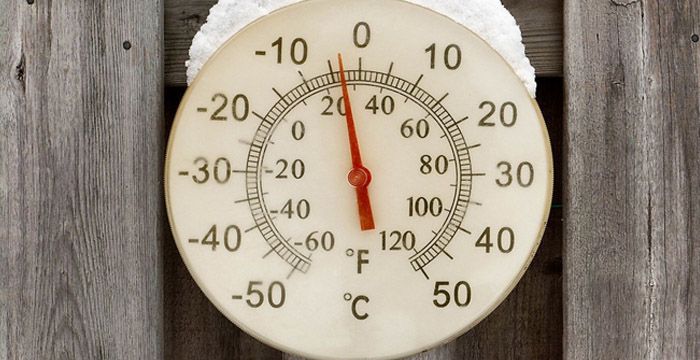Imagine two different roads starting in opposite directions but meeting at one strange, unexpected intersection. That’s what happens with Celsius and Fahrenheit temperature scales. And the point where they meet? It’s –40 degrees.
Yes, it sounds odd, but 40°C and –40°F are the same temperature. Not lower, not higher—identical.
Let’s explore why this happens and why it matters more than most people think.
Why Do We Have Two Temperature Scales?
Before we talk about –40, it helps to understand why Celsius and Fahrenheit exist:
- Celsius (°C): Used in most of the world. Water freezes at 0°C and boils at 100°C.
- Fahrenheit (°F): Used mainly in the United States. Water freezes at 32°F and boils at 212°F.
Because they use different starting points and scale sizes, the numbers rarely match, except at exactly 40.
So, Why Do Celsius and Fahrenheit Match at –40?
It all comes down to basic math.
There’s a formula to convert Celsius to Fahrenheit:
- °F = (°C × 9/5) + 32
Now let’s assume both scales give the same number. That means:
- C = (C × 9/5) + 32
Solve the equation:
- C = –40
So, –40 is the only number where Celsius and Fahrenheit are equal. It’s a rare point of intersection between the two systems.
What Does –40 Feel Like in Real Life?
- Short answer: Painful and dangerous.
- Long answer: –40 is more than just a number. It brings serious consequences to your body, your environment, and everything around you.

Real-World Consequences of –40 Degrees
1. Human Health Risks
- At –40, your body begins to lose heat rapidly. Without proper clothing:
- Frostbite can begin within 5 to 10 minutes on exposed skin.
- Hypothermia sets in fast as body temperature drops.
- Breathing in very cold air may hurt or shock your lungs.
- Your muscles stiffen and movement becomes difficult.
In such conditions, even walking short distances becomes a serious health risk.
2. Vehicle and Machinery Problems
- Car batteries often die or fail to start.
- Engine oil thickens and makes starting the car difficult.
- Diesel fuel can gel, clogging fuel lines.
- Tires lose pressure and traction is reduced.
In places where –40 is common, drivers rely on engine heaters and specialized fuel blends just to get through the day.
3. Damage to Infrastructure
- Water pipes can freeze solid and burst, causing severe flooding indoors.
- Steel in train tracks or bridges can become brittle and crack.
- Power lines may sag or snap due to ice buildup and contraction.
Entire systems—plumbing, transport, electricity—are stressed when temperatures hit –40.
4. Effects on Wildlife and Nature
- Most animals reduce movement and rely on stored fat.
- Birds fluff up their feathers for insulation or migrate.
- Lakes and rivers freeze completely.
- Snow accumulates without melting, and ground may become permanently frozen (permafrost).
- Even nature pauses at –40.
Why Does This Matter?
Knowing what happens at –40 isn't just about trivia—it’s about being prepared, communicating clearly, and staying safe.
- In international travel or news, understanding that –40 is the same in both Celsius and Fahrenheit removes confusion.
- In science, it gives researchers a common reference point between two measurement systems.
- In public safety, it allows weather warnings to be universal and easily understood.
How Temperatures Compare as It Gets Colder?

Here’s how the numbers look as the temperature drops:
- At 0°C, it’s 32°F.
- At –10°C, it’s 14°F.
- At –20°C, it’s –4°F.
- At –30°C, it’s –22°F.
- At –40°C, it is exactly –40°F.
- At –50°C, it drops further to –58°F.
So, only at –40 do the Celsius and Fahrenheit values match.
Final Thoughts: A Shared Number in a Divided System
The fact that –40°C = –40°F is more than a scientific curiosity. It’s a shared reference point in two different systems, a unique bridge between metric and imperial. And it serves as a reminder: no matter what units you use, extreme cold is dangerous.
If someone says it's –40 outside, you don’t need to ask whether they mean Celsius or Fahrenheit. Just dress warm—because either way, it’s freezing.
Post Comment
Recent Comments
Brandon Turner
Jun 25, 2025This was a fun and bite-sized deep dive into temperature scales I didn’t know I needed. The core fact—that –40°F equals –40°C—blew my mind. I appreciated how the author not only stated it clearly but also broke down the math and showed real-life implications (like frostbite and car engines failing). Bonus points for mentioning 40°C as a warm laundry setting—totally practical! The perfect mix of trivia and day‑to‑day relevance.






Brittany Coleman
Jun 25, 2025This post was surprisingly helpful. I’m studying for a basic science teaching license and was looking for ways to make temperature conversions interesting for kids — this hit the spot. The part about how –40°F = –40°C being a rare overlap was cool, and I might turn it into a classroom demo. Also, props for keeping it short — sometimes blog posts ramble too much, but this was just the right amount.